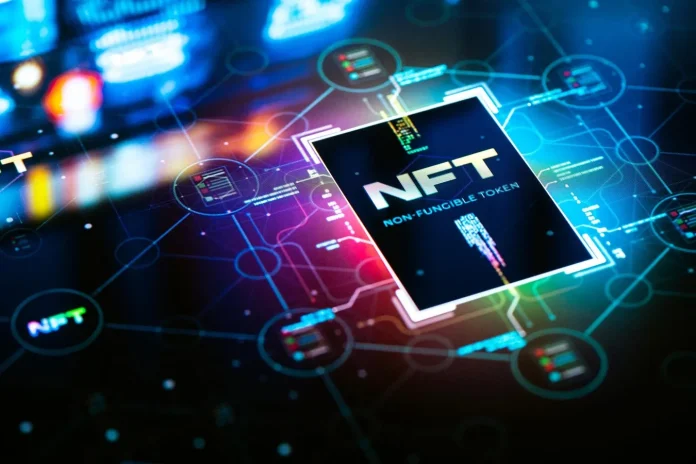NFT, or Non-Fungible Token, is a type of digital asset that represents ownership or proof of authenticity of a unique item or piece of content, such as digital art, music, videos, and other forms of media. Unlike cryptocurrencies like Bitcoin or Ethereum, which are fungible and can be exchanged on a one-to-one basis, NFTs are unique and cannot be exchanged on a like-for-like basis. This uniqueness and non-interchangeability make NFTs particularly suitable for representing ownership of one-of-a-kind items in the digital realm.
Key Features of NFTs
1. Uniqueness
Each NFT is unique, with metadata that distinguishes it from any other token. This metadata often includes information about the creator, ownership history, and any specific attributes of the item.
2. Ownership
NFTs are stored on blockchain technology, which ensures secure and transparent ownership records. When you purchase an NFT, the transaction is recorded on the blockchain, proving that you own the unique token.
3. Immutability
The data associated with NFTs, including ownership and transaction history, is immutable. Once recorded on the blockchain, it cannot be altered or tampered with, providing a trustworthy ledger of ownership.
4. Interoperability
NFTs can be used across different platforms and applications. For example, an NFT purchased on one marketplace can be transferred and displayed in a virtual gallery or used in a blockchain-based game.
How NFTs Work
NFTs are typically created and managed using smart contracts on blockchain networks. Here’s a step-by-step overview of how NFTs work:
- Creation (Minting): An NFT is created through a process called minting. This involves generating a unique digital asset on the blockchain, often using a smart contract that defines the NFT’s properties and metadata.
- Storage: The NFT’s metadata, such as the digital file it represents, is usually stored off-chain in decentralized storage solutions like IPFS (InterPlanetary File System). The blockchain stores a link to this data along with the token’s unique identifier.
- Ownership Transfer: When an NFT is sold or transferred, a transaction is recorded on the blockchain, updating the ownership record. This transaction is visible to anyone on the network, ensuring transparency.
- Verification: The blockchain ensures that the NFT’s ownership and authenticity can be verified by anyone. The immutable ledger provides a clear history of the token’s provenance.
Applications of NFTs
1. Digital Art
NFTs have revolutionized the digital art world by providing artists a way to monetize their work directly. Artists can mint their creations as NFTs and sell them on various marketplaces. Collectors can buy these NFTs, gaining ownership of a verified, unique digital artwork.
2. Music and Entertainment
Musicians and creators can issue NFTs representing songs, albums, concert tickets, and other content. This allows for direct fan engagement and new revenue streams. For example, artists can sell limited edition tracks or exclusive behind-the-scenes content.
3. Gaming
In the gaming industry, NFTs are used to represent in-game assets like characters, skins, weapons, and virtual land. These assets can be bought, sold, and traded on various platforms, providing gamers with actual ownership of in-game items.
4. Virtual Real Estate
NFTs are also used to represent ownership of virtual real estate in online worlds and metaverses. Users can buy, sell, and develop these digital plots of land, creating unique virtual environments and experiences.
5. Collectibles
Digital collectibles, such as trading cards or memorabilia, are another popular application of NFTs. Collectors can purchase and trade these digital items, which are often released in limited editions to increase their scarcity and value.
Challenges and Criticisms
Despite their growing popularity, NFTs face several challenges and criticisms:
1. Environmental Impact
The minting and transaction processes of NFTs on blockchain networks, particularly those using proof-of-work consensus mechanisms, consume significant amounts of energy. This has raised concerns about the environmental impact of NFTs.
2. Market Volatility
The NFT market is highly speculative and can be volatile. Prices of NFTs can fluctuate dramatically, leading to potential financial risks for investors.
3. Intellectual Property Issues
There have been instances of NFTs being minted without the permission of the original creators, leading to disputes over intellectual property rights. Ensuring that the person minting the NFT has the right to do so is an ongoing challenge.
4. Accessibility and Usability
The process of buying, selling, and managing NFTs can be complex for those unfamiliar with blockchain technology. Improving the user experience and making NFTs more accessible is crucial for broader adoption.
Conclusion
NFT technology represents a significant innovation in the way we think about ownership, authenticity, and the value of digital assets. By leveraging blockchain technology, NFTs provide a secure and transparent method for owning and trading unique digital items. While there are challenges to address, the potential applications of NFTs are vast, spanning art, music, gaming, and beyond. As the technology matures and evolves, it will likely play an increasingly important role in the digital economy.






